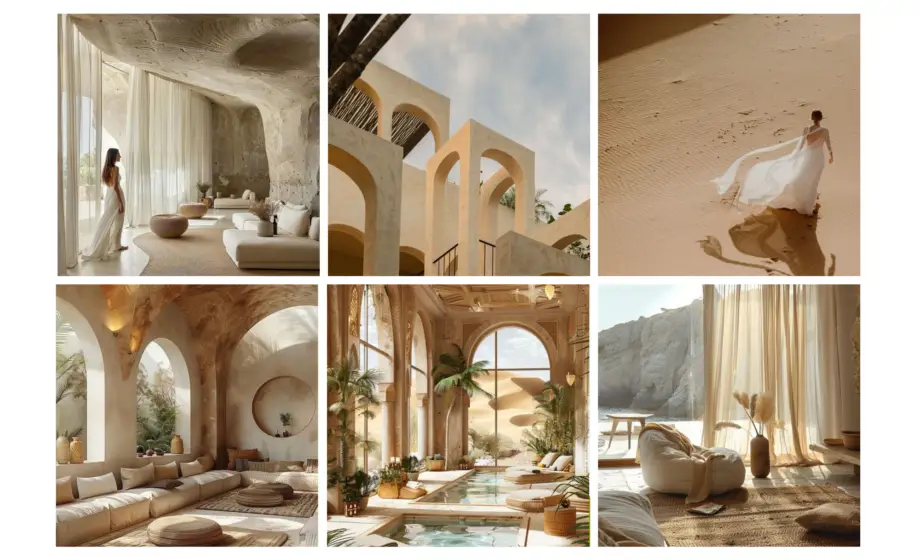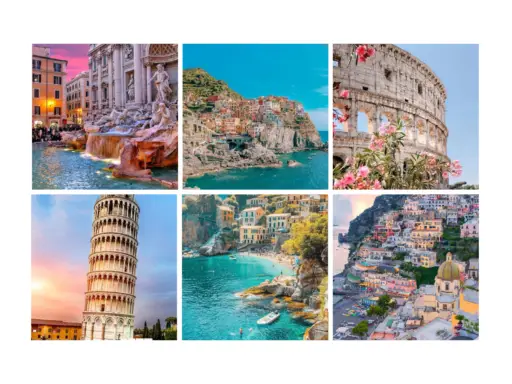Desert architecture is a unique field that combines functionality with beauty, specifically designed to withstand harsh climate conditions. It addresses the challenges posed by extreme temperatures and scarce resources while reflecting the cultural heritage of its environment. As you explore this topic, you’ll discover how innovative design principles and sustainable practices can transform arid landscapes into vibrant living spaces.
This architectural approach not only prioritizes efficiency but also enhances the aesthetic appeal of desert regions. By utilizing regional materials and smart techniques, designers create structures that harmonize with their surroundings. You’ll find that the integration of art and architecture plays a vital role in promoting tourism and cultural appreciation in these often-overlooked areas.
Understanding desert architecture gives insight into the relationship between environment, culture, and design. You’ll see how iconic projects and notable architects have pushed the boundaries of creativity while respecting the land and its history.


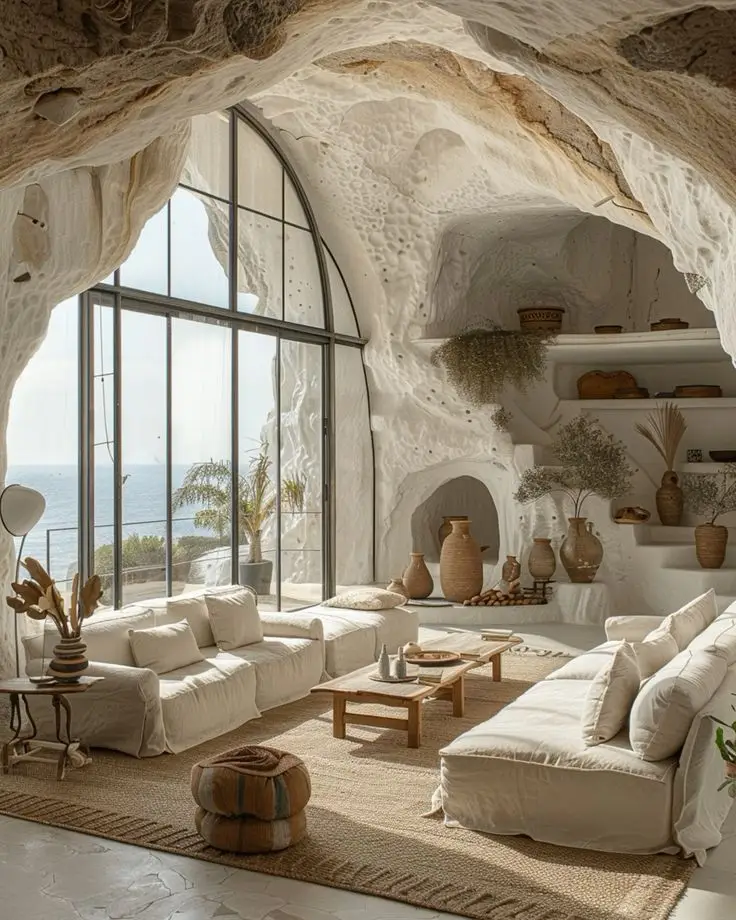
Key Takeaways
- Desert architecture is designed for extreme environments and emphasizes sustainability.
- Innovative materials and techniques play a crucial role in building in arid regions.
- This architectural style fosters cultural identity and boosts local tourism.
Basics of Desert Architecture
Desert architecture focuses on adapting building designs to arid environments, utilizing local materials and techniques. Effective strategies are essential for creating structures that cope with extreme temperatures and scarce resources.
Understanding Arid Environments
Arid environments experience significant temperature shifts between day and night. During the day, intense heat can result in uncomfortable living conditions, while nights can become surprisingly cold.
To combat these extremes, architectural designs often incorporate thick walls to insulate from heat during the day and retain warmth at night.
Ventilation is also crucial. Buildings may feature high ceilings and strategically placed windows or openings to promote air circulation. Passive cooling techniques, like shaded areas and courtyards, help maintain comfortable indoor temperatures while reducing reliance on mechanical cooling.
The Significance of Local Materials
Using local materials in desert architecture is key to sustainability and harmony with the environment. Common options include adobe, rammed earth, and local stone. These materials are often abundant and provide excellent thermal performance.
Local materials also connect structures to their surroundings, harmonizing with the desert landscape. For instance:
- Adobe absorbs heat during the day and releases it at night.
- Rammed earth offers durability and aesthetic appeal.
Incorporating locally sourced materials reduces transportation costs and environmental impact. By focusing on these materials, you support the local economy and promote cultural heritage through architectural styles that reflect regional identity.
Design Principles of Desert Structures
Designing structures in desert environments requires a focus on specific principles to ensure comfort and efficiency. Utilizing thermal mass, maximizing shade, and enhancing ventilation are essential strategies to mitigate extreme temperatures.
Leveraging Thermal Mass
Thermal mass refers to materials that can absorb, store, and release heat. In desert architecture, using dense materials like concrete or stone is effective. These materials help to moderate indoor temperatures by absorbing heat during the day and releasing it at night when temperatures drop.
Key considerations for thermal mass include:
- Orientation: Position walls with high thermal mass to face the sun for maximum heat absorption.
- Insulation: Combine thermal mass with insulation to prevent heat transfer and maintain a stable interior climate.
- Daylighting: Utilize windows strategically to enhance natural light while minimizing heat gain.
Incorporating these elements leads to passive cooling, improving energy efficiency.
Maximizing Shade and Ventilation
Creating effective shading is crucial in desert climates. You can achieve this through overhangs, awnings, and strategically placed vegetation. These features block direct sunlight and reduce heat buildup in your structure.
Ventilation is equally important. Natural airflow helps to cool spaces and remove hot air. Incorporate the following strategies:
- Cross-Ventilation: Design windows and openings on opposite sides of the building to facilitate air movement.
- Stack Ventilation: Use vertical spaces to allow warm air to rise and escape, drawing cooler air in from lower openings.
- Materials: Opt for reflective or light-colored materials that reduce heat absorption.
By focusing on shade and ventilation, you create comfortable and livable spaces in harsh environments.
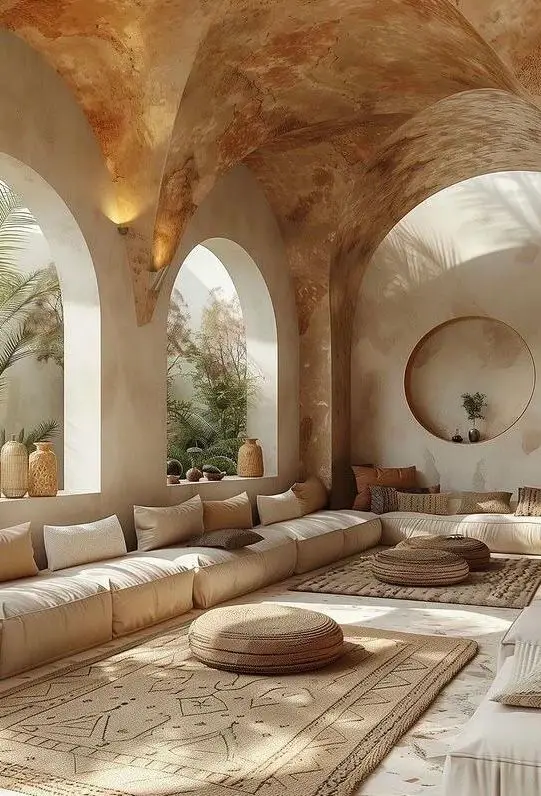

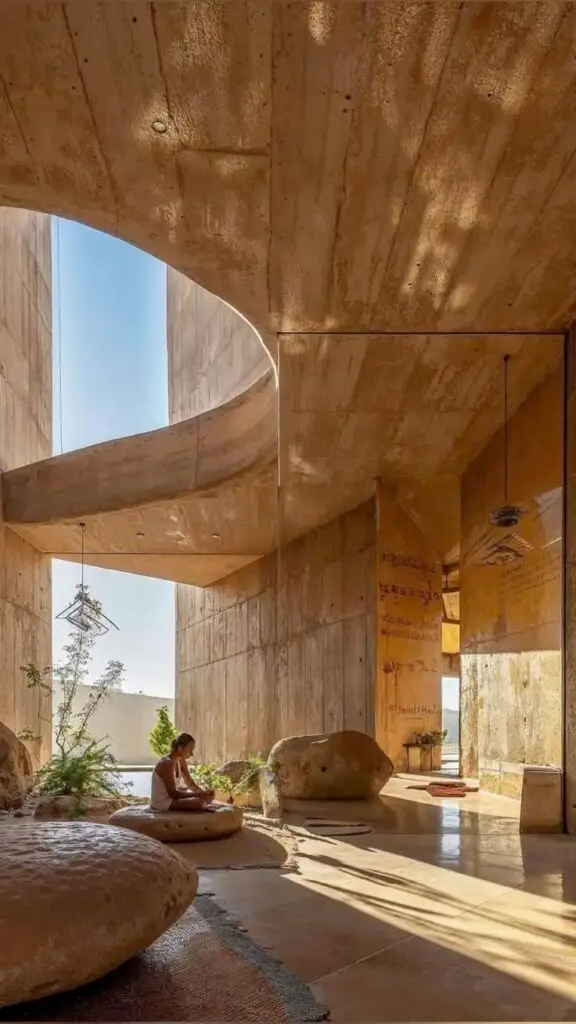
Sustainable Practices in Desert Building
Sustainable practices in desert architecture focus on minimizing resource consumption and using local materials efficiently. Key approaches include water conservation techniques and integrating renewable energy sources.
Water Conservation Techniques
Water scarcity is a significant concern in desert regions, making water conservation essential. You can implement several effective techniques to reduce water use in your building.
Rainwater Harvesting: Collecting rainwater from roofs and storage systems allows you to utilize natural precipitation, reducing reliance on municipal water supplies.
Xeriscaping: Landscaping with drought-resistant plants minimizes irrigation needs. Choosing native flora adapts better to arid climates and requires less water.
Low-Flow Fixtures: Installing low-flow faucets, showerheads, and toilets reduces water consumption without compromising performance.
Greywater Systems: Reusing water from sinks and showers for irrigation contributes to sustainability. Proper filtration ensures the water is safe for plants.
These techniques not only conserve water but also promote sustainable living in challenging environments.
Integration of Renewable Energy
Harnessing renewable energy sources is crucial for reducing dependence on fossil fuels. You can adopt various methods to power your desert building sustainably.
Solar Panels: Utilizing photovoltaic cells transforms sunlight into electricity. Orienting panels to optimize sunlight capture ensures maximum energy efficiency.
Wind Energy: In areas with sufficient wind, small-scale wind turbines can supplement energy needs. This can be particularly beneficial in isolated or off-grid locations.
Efficient Insulation: High-quality insulation materials help maintain indoor temperatures, reducing the need for heating and cooling systems. Consider using sustainable materials like rammed earth or recycled concrete for added energy efficiency.
Battery Storage Systems: Coupling renewable energy systems with battery storage allows you to store excess energy for use during peak demand or nighttime.
By integrating renewable energy solutions, you can create a self-sufficient and sustainable living environment in desert regions.

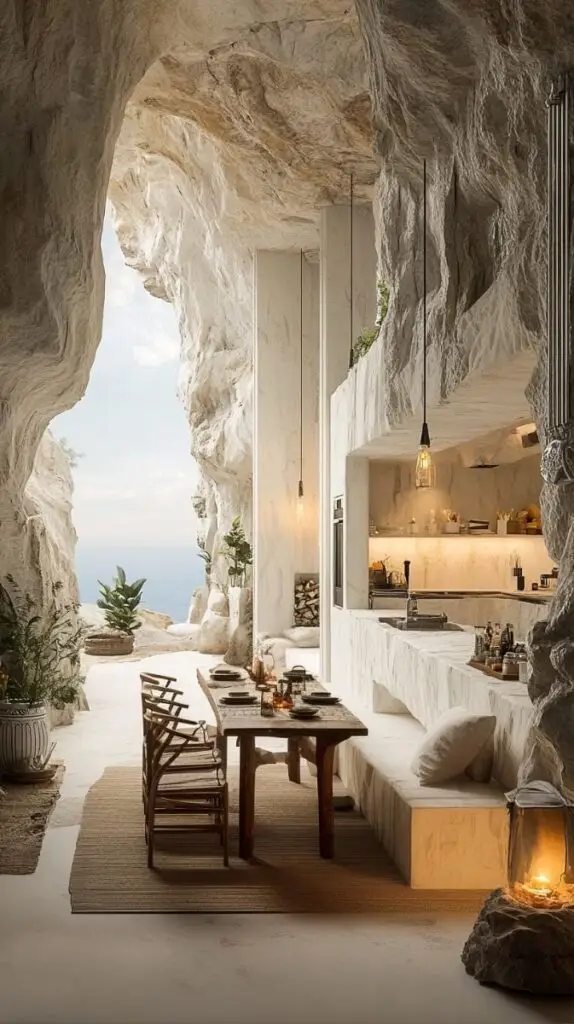

Material Innovation and Usage
In desert architecture, the choice of materials significantly influences sustainability, climate resilience, and aesthetics. Key innovations involve traditional materials like stone and rammed earth alongside modern advancements in concrete and steel.
The Role of Stone and Rammed Earth
Stone is praised for its thermal mass, helping regulate indoor temperatures. Its durability offers resistance to harsh weather and erosion. Locally sourced stones minimize environmental impact and enhance the building’s connection to its surroundings.
Rammed earth is gaining attention due to its eco-friendly properties. This technique involves compressing soil between forms to create walls. It provides excellent insulation and absorbs heat during the day, releasing it at night. Furthermore, the natural aesthetic blends seamlessly with the desert landscape.
Advancements in Concrete and Steel
Modern concrete formulations incorporate additives that enhance durability in arid environments. This adaptability allows structures to withstand intense heat and resist cracking. Additionally, concrete’s versatility in design enables innovative forms that complement desert aesthetics.
Weathering steel is also becoming popular. Its rust-like appearance develops a protective layer, minimizing ongoing maintenance. When used in desert settings, it harmonizes with the landscape while providing structural integrity. These materials play crucial roles in promoting energy efficiency and reducing long-term resource needs.


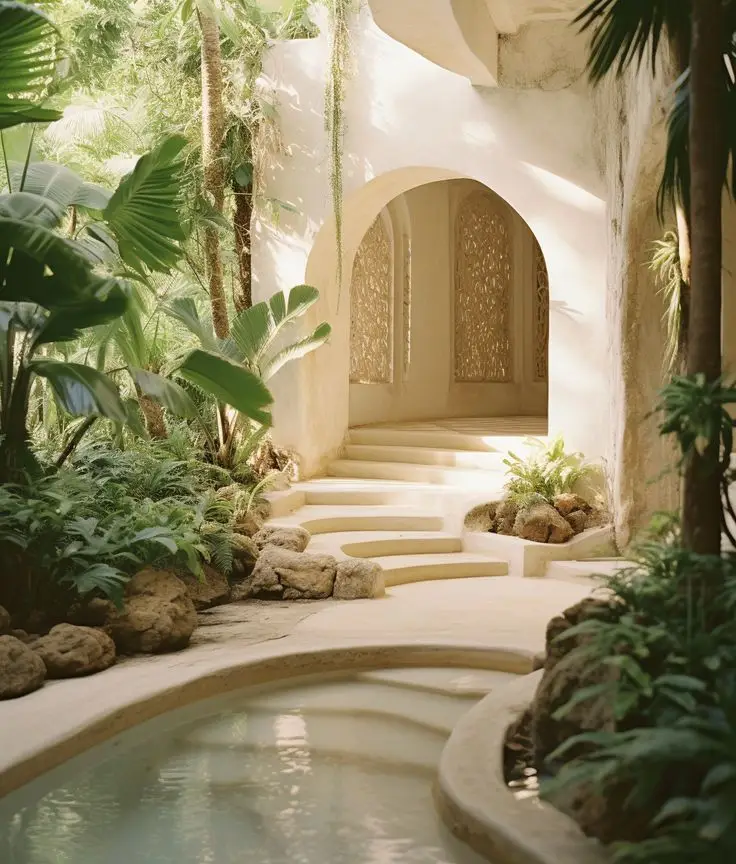
Cultural and Social Impacts of Desert Architecture
Desert architecture significantly shapes the cultural and social dynamics of the regions in which it exists. Your understanding of these impacts reveals how these structures reflect local traditions and address modern needs.
Architecture in Saudi Arabia and UAE
In Saudi Arabia, desert architecture emphasizes sustainability and cultural heritage. Traditional elements such as thick adobe walls and courtyard designs provide thermal insulation, making living conditions more comfortable.
In the UAE, particularly in Sharjah, modern structures elegantly blend contemporary design with cultural motifs. Initiatives under Saudi Vision 2030 promote adaptive reuse of historical buildings, reinforcing a connection to the past while fostering modern urban development.
These architectural trends serve not just functional purposes but also play crucial roles in shaping national identity and promoting tourism. As these projects progress, they often include community spaces, reinforcing social bonds.
Educational and Cultural Projects
Educational initiatives in desert regions increasingly prioritize architecture that enhances learning environments. Schools and universities are integrating natural ventilation and shaded outdoor areas, focusing on student well-being.
Cultural projects in the UAE and Saudi Arabia often feature art installations and public spaces designed to foster community engagement. These spaces host events that celebrate local heritage, allowing for social interactions that strengthen community ties.
Such projects are vital in promoting cultural exchange and fostering a sense of belonging among diverse populations. Efforts to incorporate local artists and architects into project designs ensure that these spaces resonate with the community’s cultural fabric.
Iconic Desert Architectural Projects
Desert architecture showcases innovative design that responds to the unique challenges of arid environments. This section highlights significant projects that exemplify effective, imaginative desert architecture, particularly in resorts and educational spaces.
Benchmark Developments in Desert Resorts
Desert resorts often demonstrate striking architecture that merges with the landscape. The Amangiri Resort in Utah is a prime example. Its design incorporates natural materials and integrates with the surrounding rock formations, providing an immersive experience.
The Six Senses Zighy Bay in Oman is another noteworthy development. Built to resemble a traditional Omani village, this resort combines sustainable practices with luxury, featuring private villas built with local stone.
Key design elements include:
- Sustainable materials: Using locally sourced stones and wood.
- Natural cooling: Architectural features that enhance airflow.
- Cultural integration: Incorporating local architectural styles.
These developments foster a connection with the desert environment while delivering comfort and luxury.
Case Study: Rajkumari Ratnavati Girl’s School
The Rajkumari Ratnavati Girl’s School in Jaisalmer is an exemplary case of innovative desert architecture focused on education. Designed by Maya Architects, the school integrates feminine symbols in its architecture, representing empowerment.
The structure employs local sandstone, which not only blends with the desert landscape but also provides excellent thermal insulation. The curriculum emphasizes sustainability in design, preparing students for future challenges.
Key aspects include:
- Environmentally friendly design: Passive cooling and natural light.
- Cultural significance: Artistic incorporation of feminine motifs in façades.
- Community focus: Spaces designed for community engagement and support.
This project highlights the potential of architecture to inspire and uplift within harsh desert conditions.
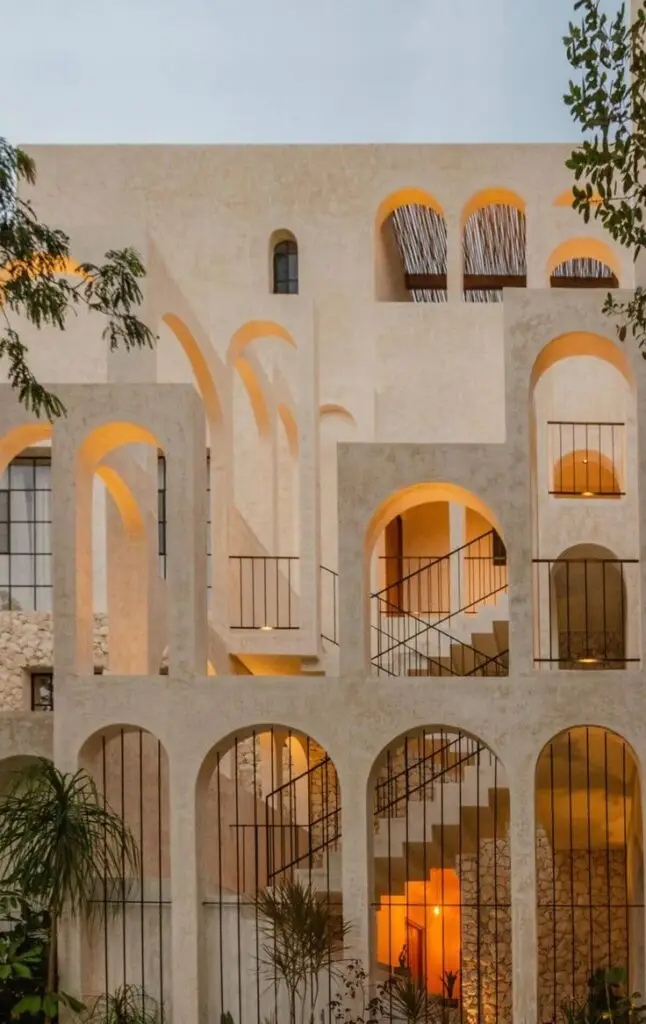


Technical Strategies for Desert Environments
Designing for desert climates requires a focus on effective cooling techniques and the use of appropriate insulating materials. Implementing these strategies will optimize comfort in harsh environments.
Passive Design and Cooling Systems
Utilizing passive design principles is essential in desert architecture. This approach maximizes natural ventilation while minimizing heat gain. You can achieve this by incorporating features like solar chimneys, which draw cooler air into the building while expelling hot air.
Key Passive Strategies Include:
- Strategic Orientation: Position windows and openings to promote cross-ventilation and shade during peak sun hours.
- Thermal Mass: Use materials that absorb heat during the day and release it at night, such as adobe or concrete.
- Green Roofs: Consider rooftop gardens, which can lower surface temperatures and improve insulation.
These techniques reduce reliance on mechanical cooling systems, leading to lower energy costs and increased comfort.
Adaptive Use of Insulating Materials
Choosing the right insulating materials is crucial in desert environments. Structural Insulated Panels (SIPs) are highly effective due to their excellent thermal performance. They create energy-efficient building envelopes that resist heat transfer.
Types of Insulating Materials to Consider:
- Aerogel: Lightweight and highly efficient, perfect for temperature control.
- Recycled Materials: Using local and sustainable resources can enhance thermal resistance while reducing environmental impact.
- Reflective Coatings: Apply these to roofs and walls to minimize solar heat absorption.
Implementing these insulating strategies enhances the sustainability and livability of your structure in extreme conditions.
Notable Architects and Influences
Desert architecture has been shaped by influential figures and contemporary firms that have redefined the relationship between structures and their arid surroundings. This section highlights key contributors, focusing on Frank Lloyd Wright and notable modern interpretations.
Frank Lloyd Wright’s Desert Buildings
Frank Lloyd Wright is a pivotal figure in desert architecture, known for his concepts of organic architecture that blend seamlessly with nature. His buildings, such as Taliesin West in Arizona, exemplify this philosophy through the use of local materials and an understanding of the region’s climate.
Wright’s designs often incorporate wide overhangs, which protect interiors from harsh sunlight, while natural ventilation reduces reliance on artificial cooling. The integration of indoor and outdoor spaces enhances the living experience in arid environments. His commitment to harmonizing architecture with the desert landscape has left a lasting legacy, influencing countless architects.
Modern Interpretations by Contemporary Firms
Modern firms like AW2 have emerged as leaders in adapting desert architecture for contemporary needs. They emphasize sustainability by utilizing eco-friendly materials and innovative technologies.
AW2’s projects, such as the King Abdullah II House, showcase adaptive designs that respond to climate challenges. Features like thermal mass and energy-efficient systems help regulate indoor temperatures, minimizing energy consumption. These modern interpretations maintain the principles set by earlier architects while incorporating advancements in design and technology, ensuring functionality meets aesthetics in desert environments.
Future of Desert Architecture
Desert architecture is evolving rapidly, driven by innovative technologies and a focus on sustainability. You will encounter emerging trends that prioritize sustainable living and modular construction, reflecting the needs and aspirations of desert communities.
Emerging Trends and Innovations
You will see a rise in designs that incorporate local materials and energy-efficient systems. Architects are now leveraging technologies like solar panels and thermal mass to create structures that remain cool in extreme heat.
Events like Burning Man inspire temporary architecture that can adapt to harsh environments. These developments showcase how creativity can intersect with functionality, leading to structures that respond to both climate and user needs.
In places like Saudi Arabia, initiatives under Vision 2030 are driving investments in sustainable urban development. This integration of culture, technology, and environment may redefine desert living for generations.
Sustainable Living and Modular Constructions
Sustainable living in desert architecture often revolves around minimizing resource usage while maximizing comfort. You are likely to find a stronger emphasis on water conservation, using drought-resistant landscaping, and implementing greywater recycling systems.
Modular construction techniques enable quick assembly and disassembly, perfect for temporary or seasonal structures. This approach not only reduces construction waste but also allows for flexibility in adapting designs as needs change.
As desert regions grow, integrating community spaces with environmentally conscious designs will become increasingly important. Embracing these innovations ensures a resilient and sustainable future for desert habitats.
Integrating Art and Architecture
In desert architecture, the integration of art with architectural elements enhances the interaction between built spaces and their environments. This collaboration can create unique, immersive experiences that reflect the surrounding landscape and culture.
Case Examples: Outdoor Artistic Installations
The Museum of Outdoor Arts features the Element House, which combines innovative architecture with engaging sculptures. The installation incorporates weathering steel, celebrated for its durability and rust-like appearance. This material not only withstands harsh desert conditions but also complements the natural palette.
Outdoor arts installations often emphasize the contrast between natural and constructed elements. You may find sculptures that mimic native flora and fauna, providing both aesthetic appeal and a sense of place. Such artworks serve as landmarks, encouraging exploration and interaction in the arid landscape.
Promoting Tourism Through Desert Architecture
Desert architecture creates unique experiences that attract tourists and foster economic growth. Key developments include desert camp hotels and informative visitor centers, both designed to enhance the travel experience while respecting the environment.
Development of Desert Camp Hotels and Visitor Centers
Desert camp hotels offer immersive experiences, blending luxury with nature. You can find accommodations that incorporate local materials, preserving the cultural aesthetics while providing comfort. These hotels often utilize sustainable practices, such as solar energy, to minimize environmental impact.
Visitor centers play a crucial role in tourism by offering insights into local ecosystems and cultures. They provide maps, guided tours, and educational exhibits that enhance your understanding of the desert environment. By attracting tourists, these centers support local economies and promote conservation efforts, ensuring that these landscapes remain pristine for future generations.


